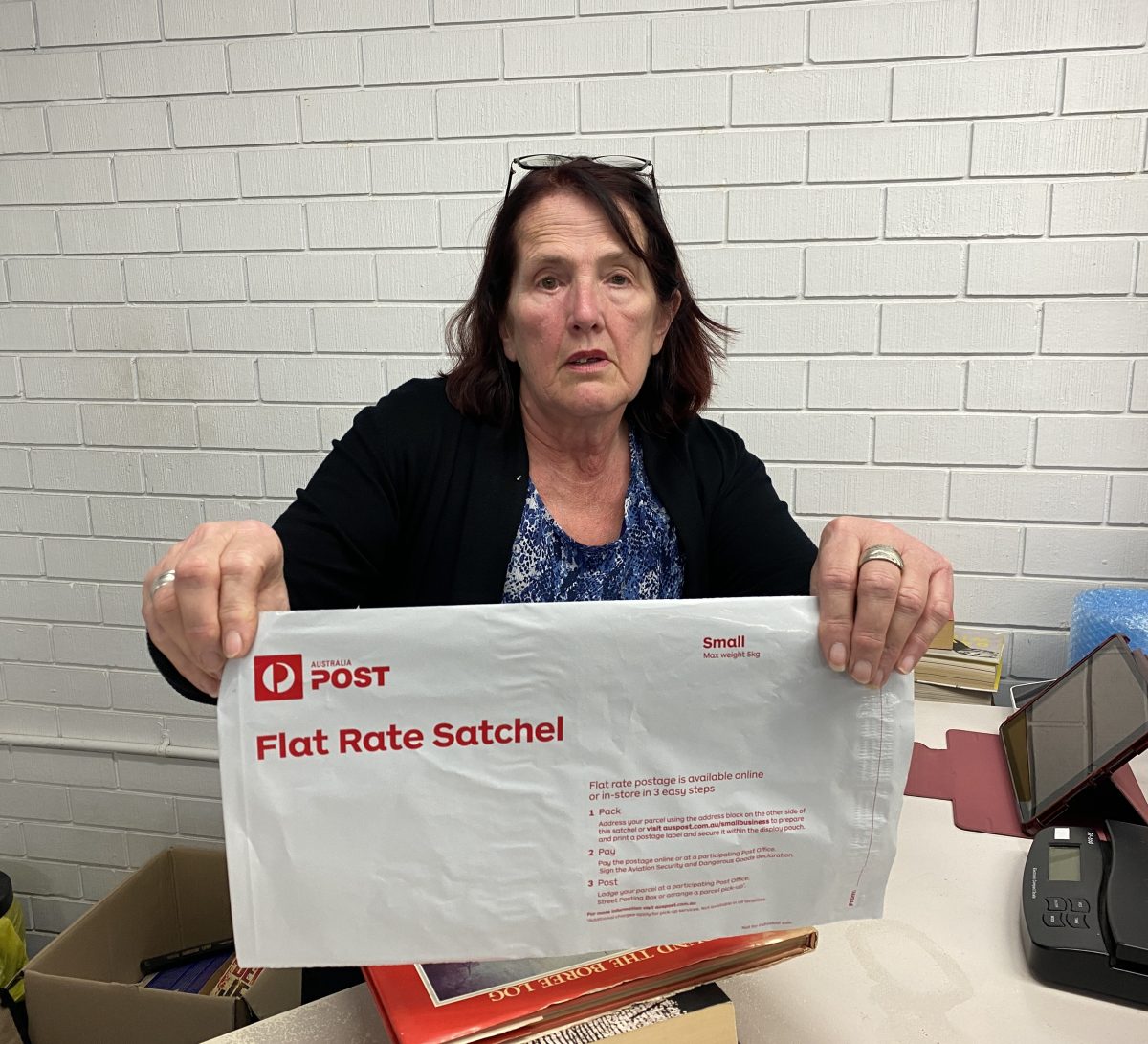
Carol Rose says the rising cost of sending parcels is squeezing her business. Photo: Oliver Jacques.
Riverina customers have called on Australia Post to prioritise rural communities as highly as its own executives, as the cost of sending parcels now often exceeds the value of items being sent.
The self-funded government enterprise has been rapidly hiking the price of sending packages over the past five years, with the most recent rise of around 10 per cent coming into effect last month.
At the same time, the company has come under fire for the lavish salaries it pays its executive staff, with $28 million dished out in bonuses to elite employees already earning more than $235,000 during the 2021/22 financial year.
Carol Rose, the co-owner of Griffith’s only secondhand bookshop, Browse Books, says she feels the price of sending a parcel overseas has almost doubled in the past few years.
“We have a website and people from all around the world can put orders in,” she said. “Before COVID, you could send something overseas for $20 … I think we’ve had two or three price rises from Australia Post in the last 12 months alone.
“It makes it very hard for us. We’re having to pay up to $45 to send books to the US … they don’t seem to care about regional communities; if you’re a rural producer anywhere in Australia, it’s getting very hard to move your product around.
“There isn’t a viable alternative to Australia Post in rural areas.”
Pensioner Gwen Beaton says she now has to reconsider whether she can send gifts to her grandkids who live on the coast.
“I can’t send as many parcels as I’d like to send. I was mailing my grandchildren those robot gaming cards every month, but sending them was costing more than the cards themselves.
“Even to send a gift card, the cost is enormous – you’ve got to add $10 to $15, whereas a couple of years ago it wasn’t anything like that.”
Ms Rose and Ms Beaton said Griffith Australia Post franchises and staff did an excellent job and were not to blame for the price rises. But they say the decisions coming from the top are hard to understand.
Australia Post did not answer a question from Region on how much the cost of sending parcels had increased since 2018, and there is no information on previous costs on their website. The company also did not answer our question on whether it offered any schemes/programs to assist rural businesses struggling with the rising costs of sending Australia Post parcels.
But a spokesperson offered the following comment.
“Australia Post is working harder than ever to provide a sustainable delivery service. We carefully consider any pricing changes and the impact it has on our customers,” the spokesperson said.
“Like all logistics businesses, Australia Post is operating in an environment of increasing inflationary pressures and rising energy, fuel and labour costs.
“As a completely self-funded organisation that receives no government assistance, these pricing changes are necessary to help Australia Post address its increasing costs.”
This was little comfort for Ms Rose, who wondered if the company put its executives ahead of its rural customers.
Despite its increasing costs and flagging revenue, Australia Post is constantly in the news for the way it generously rewards its bosses, mostly notably in 2020 when it was revealed senior staff were given luxury Cartier watches.
“If you want to encourage small business and productivity, instead of buying Cartier watches you should be focusing on providing good services in rural Australia,” Ms Rose said.
“It’s like Medicare, everyone knows the system is broken … the ordinary people have been forgotten.”
Australia Post also did not answer a question from Region on how its executive salaries and bonuses had changed since 2018, given growing costs and financial losses.
But Region was advised that customers struggling with the cost of deliveries could speak to their local Australia Post office to find out the best rates for them and if there were any circumstances in which reduced rates could be applied.










